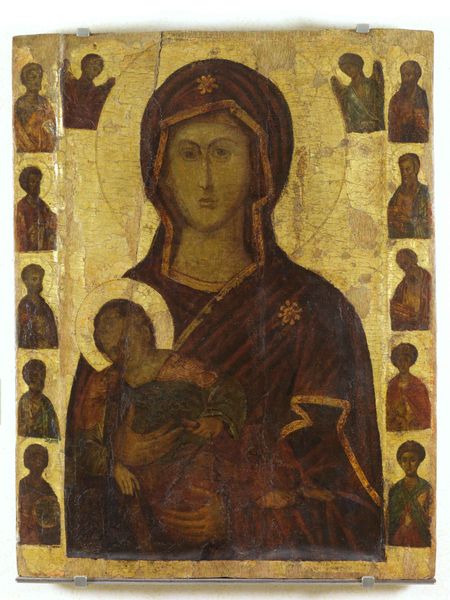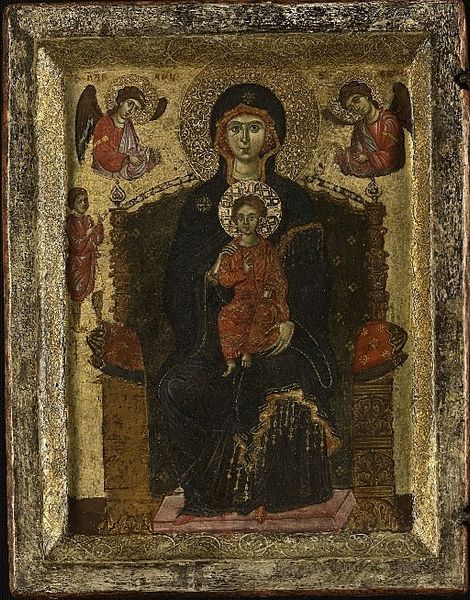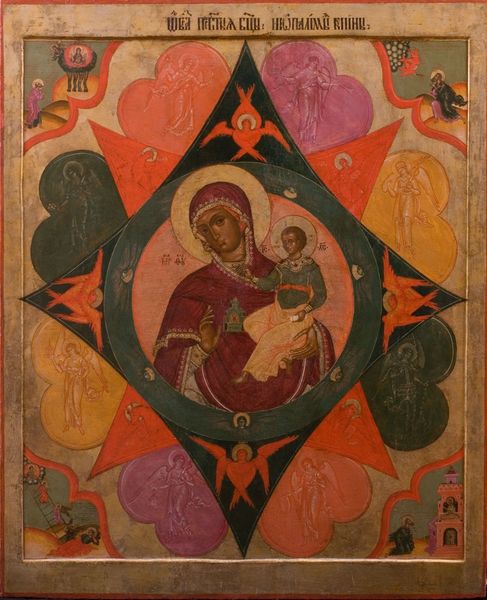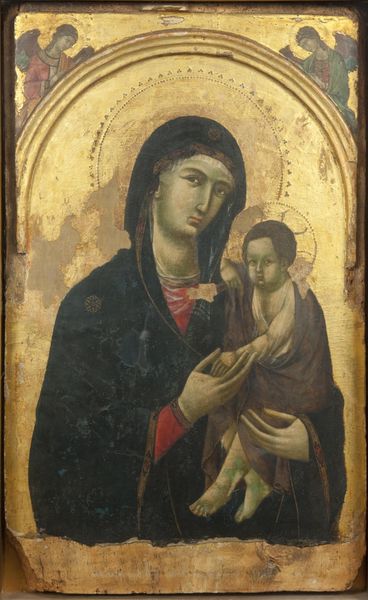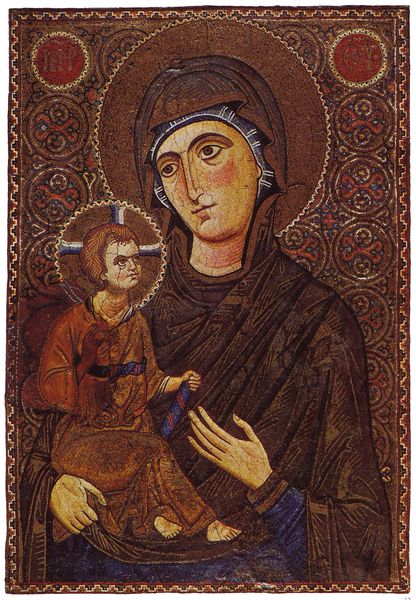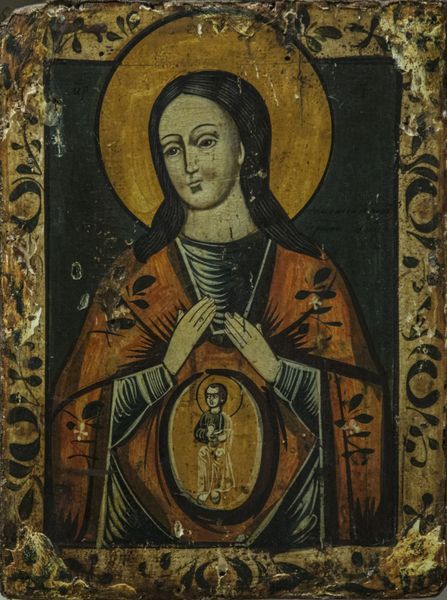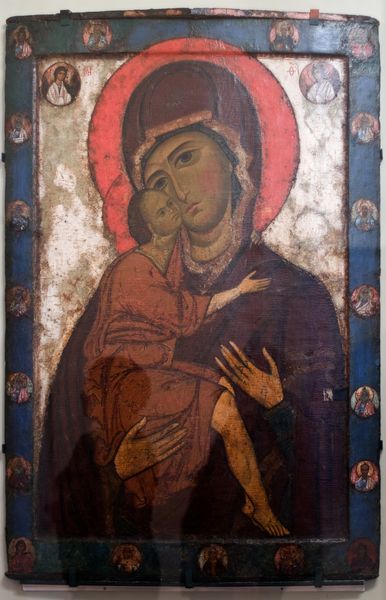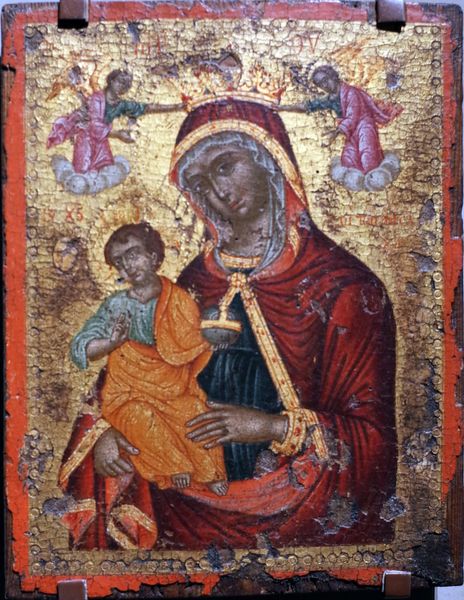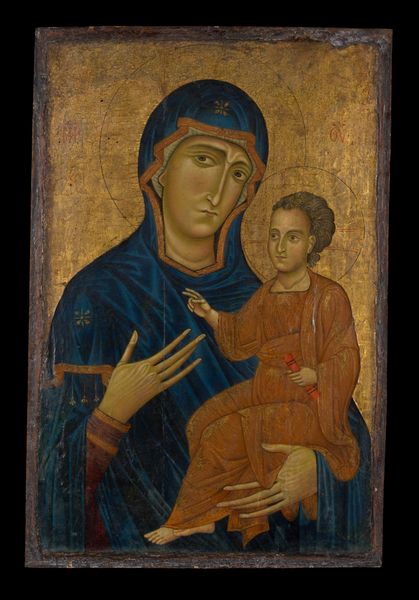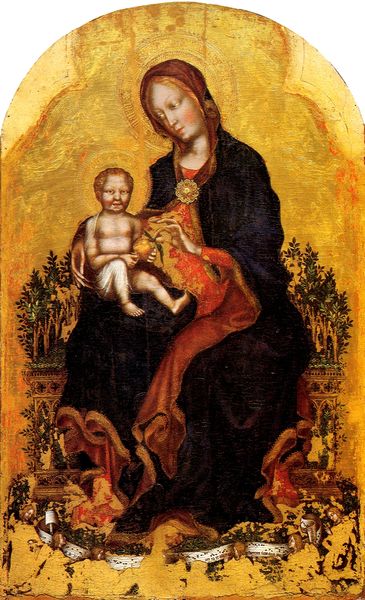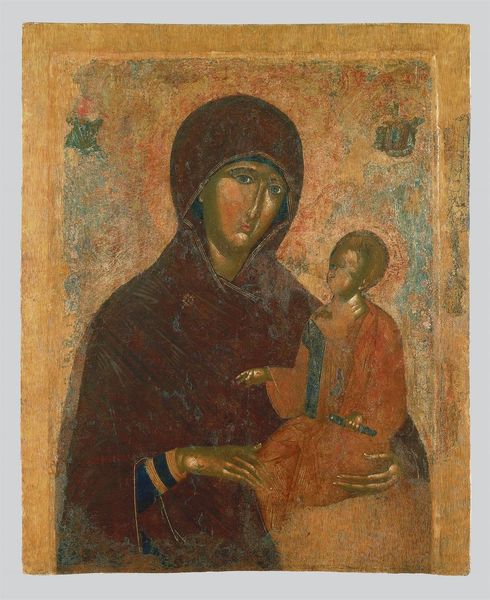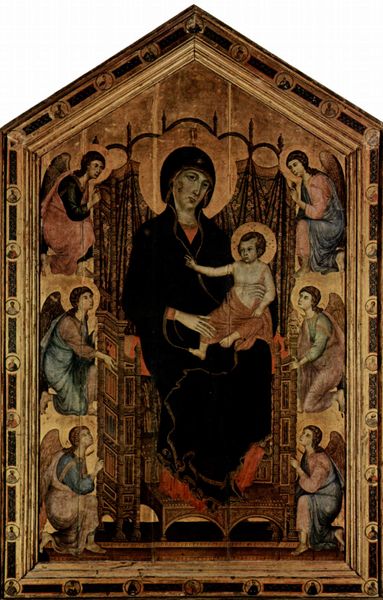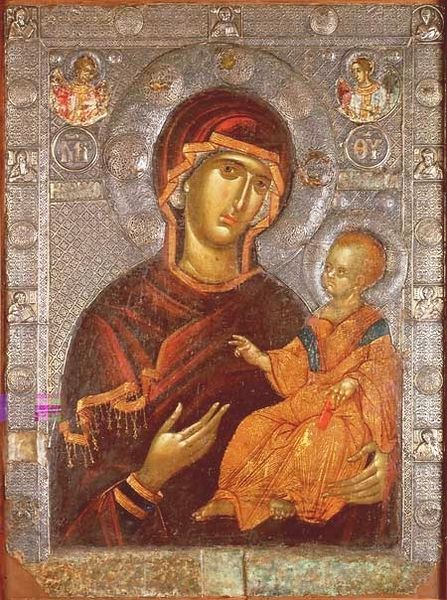
Madonna and Child Enthroned with Four Saints c. 1240 - 1245
0:00
0:00
tempera, painting
#
portrait
#
byzantine-art
#
medieval
#
tempera
#
painting
#
figuration
#
history-painting
Dimensions: overall: 97.3 × 49.9 × 1.3 cm (38 5/16 × 19 5/8 × 1/2 in.) height (main panel, without extension for head and halo): 73.6 cm (29 in.) top section (extension for head and halo): 26.5 × 23.5 cm (10 7/16 × 9 1/4 in.) framed: 102.2 x 55.9 x 5.7 cm (40 1/4 x 22 x 2 1/4 in.)
Copyright: National Gallery of Art: CC0 1.0
Margaritone d’Arezzo painted this Madonna and Child Enthroned with Four Saints, using tempera and gold on wood, during the 13th century. Margaritone, as he is known, lived and worked in Arezzo, Italy at a time of great social and religious change. This panel reflects the Italo-Byzantine style of the time. The elongated figures, the use of gold, and the somber expressions are all typical of Byzantine art. The Madonna, as the mother of Christ, was, and still is, an important figure of devotion and a representation of ideal womanhood. Here, she sits rigidly on her throne, holding the infant Jesus. They are surrounded by four saints, who stand as witnesses to the divine scene. But what does it mean to depict women in such a formal, almost unapproachable manner? Does this elevate them, or does it confine them to an unrealistic ideal?
Comments
No comments
Be the first to comment and join the conversation on the ultimate creative platform.
